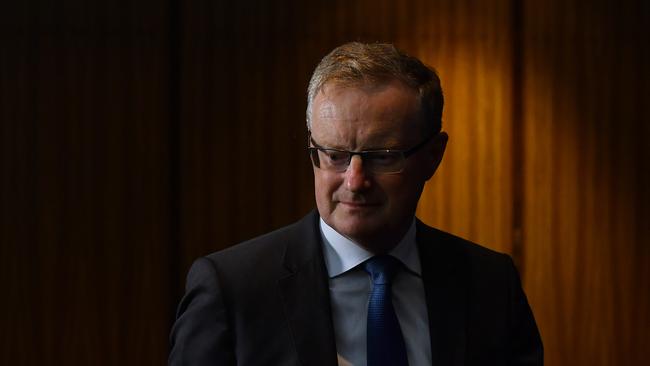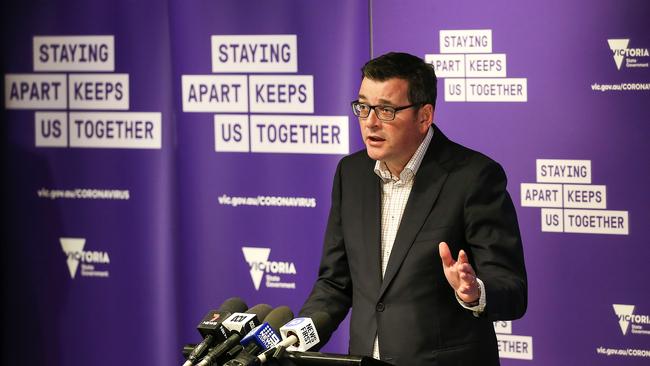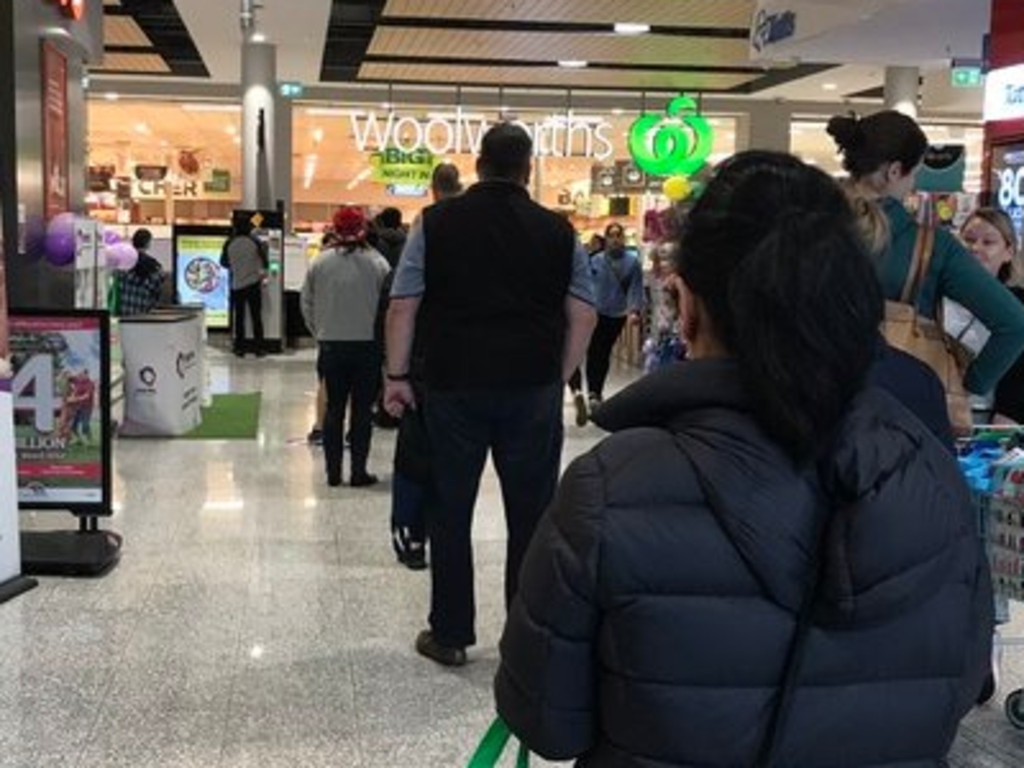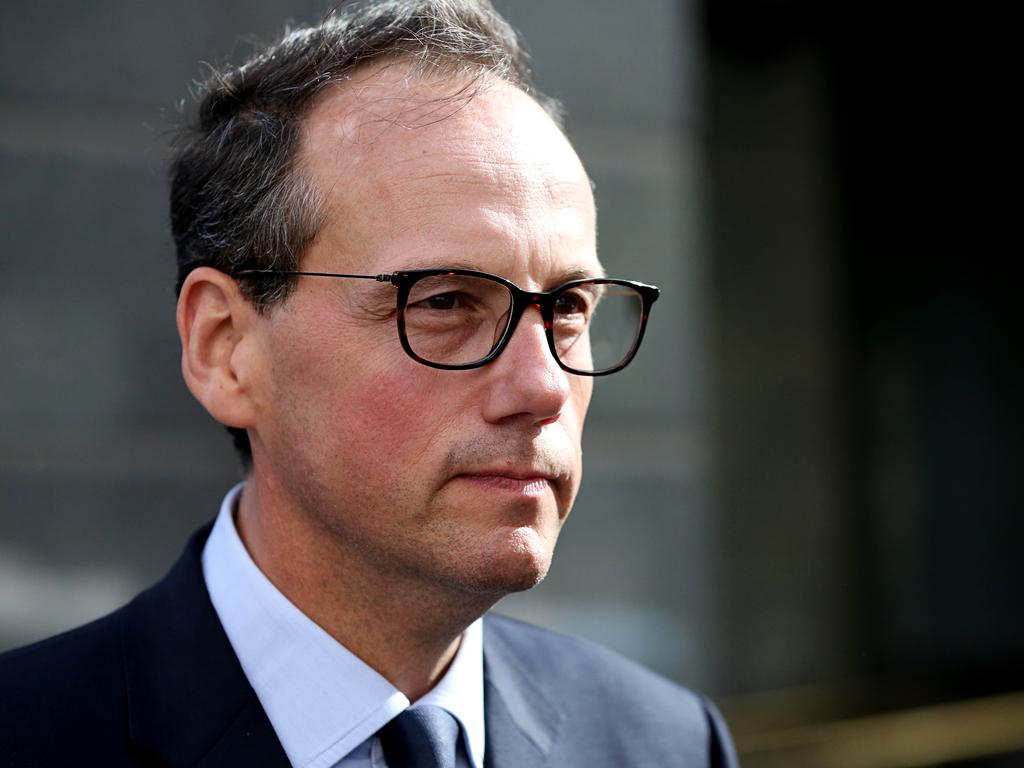
The expected severe knock-on effects of the emergency measures in Victoria on the economy and on national confidence will put the Treasurer under increasing pressure to extend the expensive JobKeeper program and provide more economic assistance to businesses and individuals hit by the new lockdowns measures.
Until recently, Australia was feeling relieved that the downturn in the economy and the fall in unemployment from the pandemic was not going to be as bad as initially feared.
As the Reserve Bank noted in its July statement released on Tuesday, “conditions have stabilised recently and the downturn has been less severe than earlier expected”.
The fall in total hours worked, it reported, was less than expected, while retail spending has picked up in response to the fall in new cases and the easing of restrictions in most of the country.
The RBA statement talked of a “gradual improvement” and a “bumpy” recovery ahead, as the “worst of the global economic contraction” has passed.
But that was before Andrews revealed that the situation in Victoria was so bad, with a record new 191 cases reported on Tuesday, that it needed to reimpose lockdowns on large parts of its economy.
Within an hour of it being released, it seemed as if the RBA statement was out of date.
The shutdown and the indefinite closure of the NSW-Victoria border are clearly necessary to try to get the situation under control in Victoria.
But they will still deliver another blow to business and national consumer confidence at a time when it looked as if the worst was over.
A sombre Andrews delivered the bad news to Victorians about the need to reimpose restrictions, declaring: “This is not where any of us wanted to be, but we have to face the reality of our situation.
“To do anything else would have deadly consequences. I don’t take this step lightly.
“This isn’t over, and until there is a vaccine or a drug or a cure, there is no such thing as ‘normal’.”
Will it get worse?
The national economy contracted by 0.3 per cent in the March quarter, the first fall in output in nine years, ending more than 28 years of consistent economic growth.
“The Australian economy,” the Reserve Bank noted, “is going through a very difficult period and experiencing the biggest contraction since the 1930s.”
But with hopes of an immediate recovery now dashed as a result of the Victorian outbreak — and NSW Health Minister Brad Hazzard warning that his state could reimpose restrictive conditions if COVID-19 outbreaks were to occur — the downturn will worsen.
The more relevant parts of the RBA statement are now around its comments about uncertainty.
“The outlook remains uncertain,” it said.

“Uncertainty about the health situation and the future strength of the economy is making many households and businesses cautious … (which in turn is) affecting consumption and investment plans.”
As the RBA statement noted, the pandemic has been prompting many firms to “reconsider their business models”.
“As some businesses rehire workers as demand returns, others are restructuring their operations” — a euphemism for laying off more workers.
The events of the past few days in Victoria will prompt more businesses around the country to “reconsider” their business models, bracing for an even sharper slowdown.
Those businesses that may have been hanging onto staff in the hope that the crisis was drawing to an end could soon start to re-evaluate their medium-term outlook and think about a new round of lay-offs, maybe after waiting for the news in Frydenberg’s July 23 statement.
Negative filter
To be accurate, one has to read the RBA statement with a negative filter over it — given that it determinedly sticks away from mentioning any concerns at all over the impact of what has become a crisis in Victoria.
A six-week shutdown of Melbourne and a sharp drop in trade and commerce between the country’s two largest states cannot help but have severe implications for the economy.
The better than expected levels of unemployment so far, of course, have also been helped by the rollout of the $70bn JobKeeper program — but that is due to finish at the end of September.
The federal government’s July economic statement was expected to announce some extension of the scheme, but only for targeted industries such as aviation.
But Frydenberg will now need to see what he can afford to do to provide more support for those hit by the pandemic.
Whatever happens, the country’s unemployment rate — currently running at 7.1 per cent — is headed further upwards.
The most accurate comment in the RBA statement was not a new one but it is even more relevant given the recent events in Victoria.
“The substantial, co-ordinated and unprecedented easing of fiscal and monetary policy in Australia is helping the economy through this difficult period,” the statement said.
“It is likely that fiscal and monetary support will be required for some time.”







Tuesday’s announcement by Victorian Premier Daniel Andrews of a six-week lockdown of Melbourne and other parts of the state, as well as the closure of the border between Australia’s two biggest states, is expected to send Josh Frydenberg back to the drawing board for his July 23 economic statement.